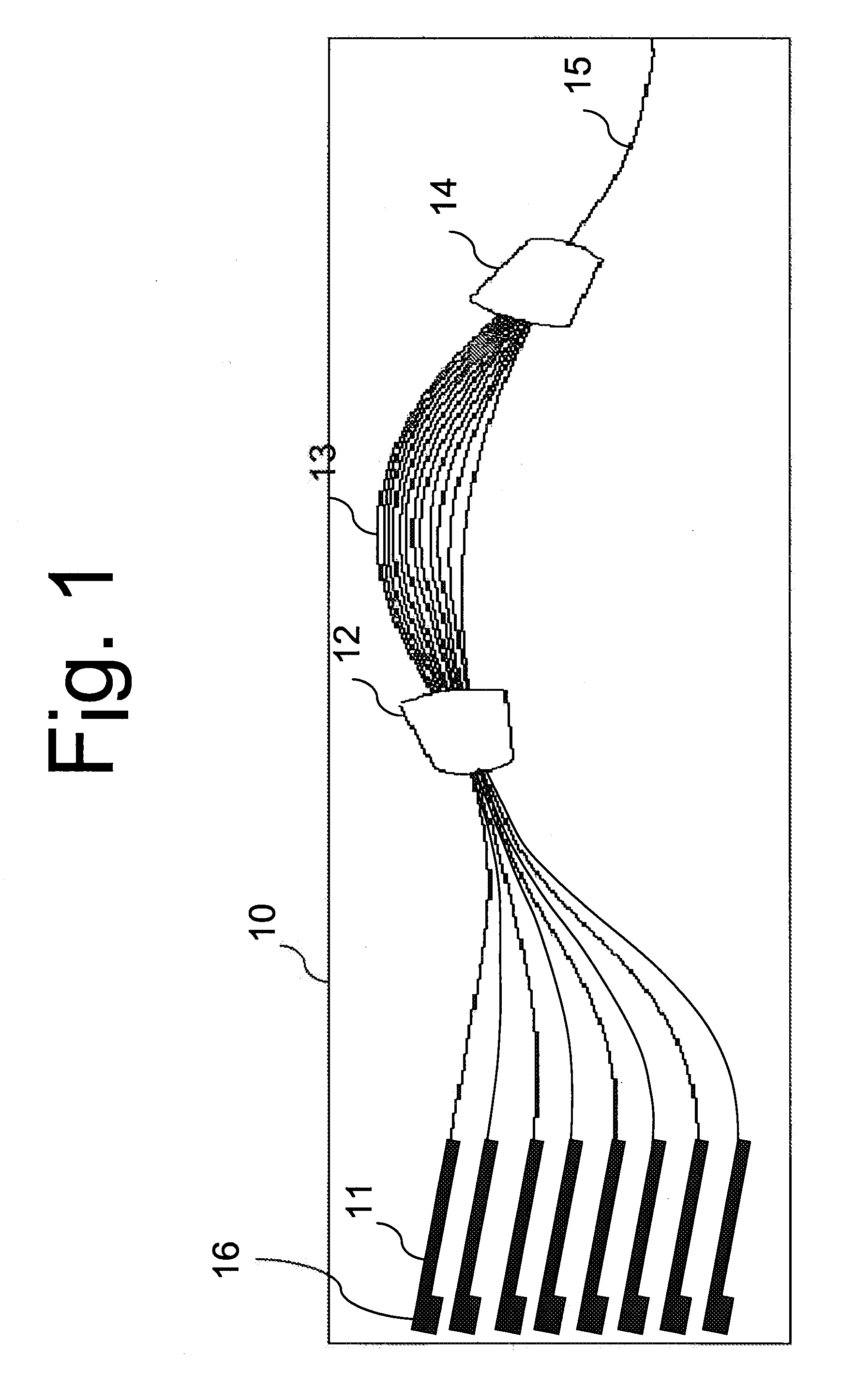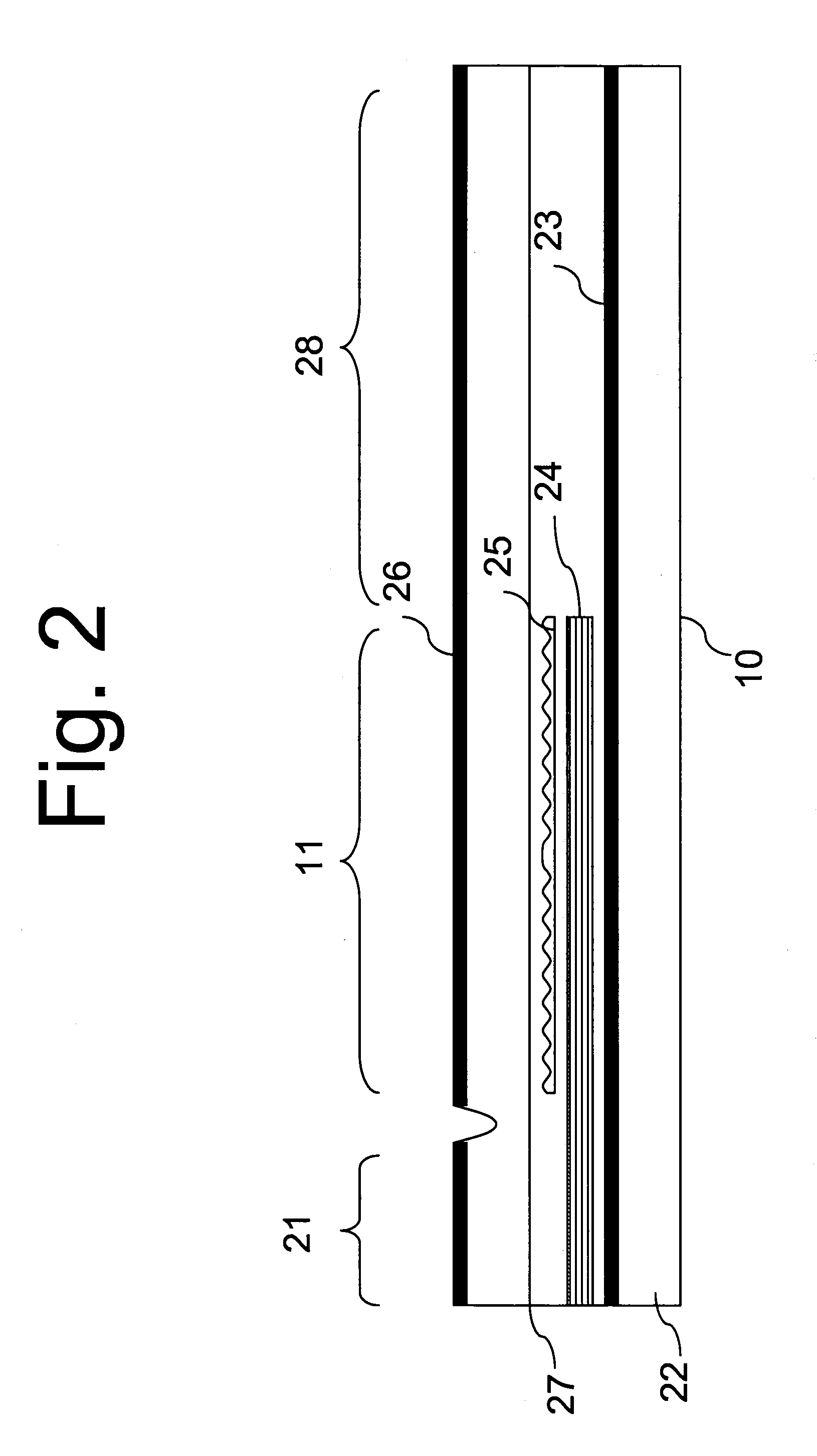High data rate long reach transceiver using wavelength multiplexed architecture
- Summary
- Abstract
- Description
- Claims
- Application Information
AI Technical Summary
Benefits of technology
Problems solved by technology
Method used
Image
Examples
Embodiment Construction
[0021]Reference is made to FIG. 1 illustrating an embodiment of a transmitter integrated circuit 10. A chip is made in InP semiconducting material and has 8 phase shifted DFB lasers 11. Each laser has a different grating pitch such that the wavelengths of the lasers are separated, preferably by 5 nm. The output of these lasers enters passive waveguides that contain no active region. These passive waveguide connect to an arrayed waveguide grating (AWG) (combination of 12, 13, 14) that multiplexes all the wavelengths of light together into a single output 15. The entire chip 10 can be made quite compact, since the wavelength spacing between the laser elements is large. In fact, the resolution of the AWG is dependent on the length difference between the arms, the wider laser wavelength spacing means a smaller AWG is possible.
[0022]The lasers are preferably directly modulated devices. In such embodiments each laser has a bond pad 16, that is connected to a driver source. Directly modula...
PUM
 Login to View More
Login to View More Abstract
Description
Claims
Application Information
 Login to View More
Login to View More - R&D
- Intellectual Property
- Life Sciences
- Materials
- Tech Scout
- Unparalleled Data Quality
- Higher Quality Content
- 60% Fewer Hallucinations
Browse by: Latest US Patents, China's latest patents, Technical Efficacy Thesaurus, Application Domain, Technology Topic, Popular Technical Reports.
© 2025 PatSnap. All rights reserved.Legal|Privacy policy|Modern Slavery Act Transparency Statement|Sitemap|About US| Contact US: help@patsnap.com



